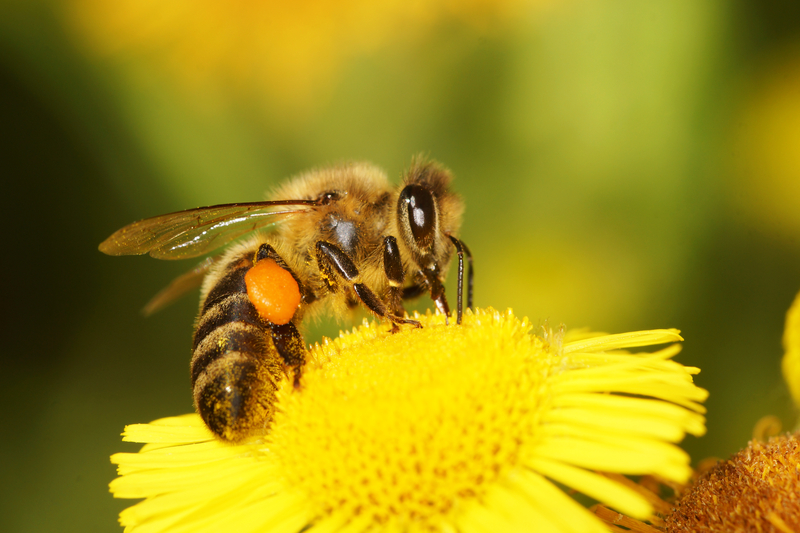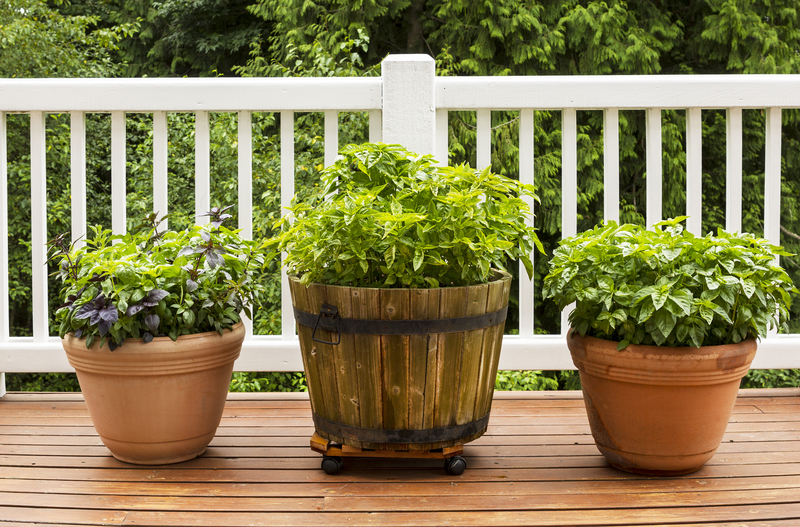Dynamic Ideas: The Top 3 Tips for Transportable Gardening
In the bustling world of modern living, flexibility and adaptability have become treasured qualities--and our love for greenery is no exception. Transportable gardening has emerged as a creative solution for city dwellers, renters, and anyone who loves the convenience of moving their garden with ease. With this approach, your garden can shift with your lifestyle, brighten up small spaces, patios, or balconies, and infuse every spot with a breath of natural beauty. Whether you're new to plant care or an experienced green thumb, these dynamic ideas for movable gardening will elevate your growing game.
What Is Transportable Gardening?
Transportable gardening refers to a gardening technique where plant arrangements are designed for easy movement. Unlike traditional soil beds, transportable gardens thrive within containers, pots, raised beds on casters, or even mobile vertical walls. This trend supports today's drive for sustainability, spatial efficiency, and personal creativity.
People turn to portable gardens for many reasons:
- Urban lifestyles where space is at a premium
- Living in rental properties or frequent moves
- Protecting plants from harsh weather by moving them indoors/outdoors
- Seasonal decorating and experimenting with sunlight exposure
If you're seeking flexible gardening solutions, understanding the top three tips for dynamic, transportable gardening will empower you to create lush, movable plant havens anywhere.

Tip #1: Choose the Right Containers and Structures
Container Selection Matters Most
The heart of moveable gardening lies in the containers you select. A successful transportable garden starts with the right base--be it pots, troughs, grow bags, or wheeled raised beds. Your choice impacts plant health, ease of movement, and overall garden aesthetics.
- Size & Material: Pick containers proportionate to your plants' mature size. Lightweight materials like plastic, resin, or fabric pots make transport easier, while clay and ceramic offer better breathability but are heavier.
- Drainage: Ensure containers have sufficient drainage holes to prevent waterlogging, which is a common issue in portable gardens.
- Portability: Some containers come with built-in handles or casters. Consider adding rolling plant stands or using plant caddies for heavy pots--this will spare you from lifting injuries and protect delicate flooring or patios.
- Grow Bags: Fabric grow bags have surged in popularity for their flexibility, excellent root aeration, and ease of movement. When not in use, they fold flat for storage.
- Vertical Planters: For the ultimate space-saving dynamic, vertical garden panels can be placed on wheels or freestanding racks, allowing you to maximize greenery even in tight quarters.
Pro Tip: Use a mix of container types and sizes for a visually appealing, multifunctional portable garden.
Stability vs. Mobility
While the goal is movement, stability remains necessary. Place heavy or top-heavy plants in low wide containers or seek pots with weighted bottoms to avoid tipping during windy conditions. At the same time, avoid overfilling containers with soil to keep them light enough for easy relocation.
DIY Rolling Beds and Reclaimed Materials
You don't need to stick with store-bought options. Repurpose old wheelbarrows, crates or build raised beds on castor wheels for a cost-effective and eco-friendly dynamic gardening solution.
Remember: The more suited your containers are for transport, the more enjoyable and seamless your portable gardening experience will be!
Tip #2: Select Adaptable, Resilient Plants
Best Plant Choices for Moveable Gardens
Not all plants are created equal when it comes to the lifestyle of a dynamic, movable garden. Choose species that thrive in containers, adapt well to changing conditions, and tolerate movement.
- Herbs: Basil, thyme, mint, oregano, chives, and parsley are compact and enjoy container life.
- Vegetables: Cherry tomatoes, lettuce, spinach, radishes, and peppers grow beautifully in pots. Look for "patio" or dwarf varieties bred for small spaces.
- Flowers: Petunias, pansies, marigolds, nasturtiums, and dwarf zinnias add color and thrive in containers.
- Ornamental Foliage: Snake plants, spider plants, succulents, and ferns are resilient, tolerate varied light, and handle movement well.
- Dwarf Citrus Trees: Try calamondin orange, dwarf lemon, or lime trees in large tubs for a fruitful and aromatic touch.
- Climbing & Trailing Plants: Ivy, trailing petunias, or sweet potato vine succeed in hanging baskets and vertical planters.
*Avoid plants with deeply invasive roots or those requiring large, restricted root zones unless you have ample container space.
Multiple Microclimates? Opt for Versatility!
Movable gardens often travel between indoor and outdoor spaces, shaded patios and sunny balconies. That's why it's wise to select plants that can adapt to fluctuations in temperature, light, and humidity. Herbs, many houseplants, and certain annuals fit the bill, as they transition smoothly with a little acclimation.
Acclimatization: When you move your plants, do so gradually. For example, introduce indoor plants to outdoor conditions a few hours each day to prevent shock and sunburn.
Planning for Succession and Rotation
Capitalize on the flexibility transportable gardening offers. As seasons change, you can:
- Mix and match seasonal color: Swap out spring bulbs for summer blooms or autumn foliage in the same container.
- Rotate for optimal sun: Move containers around your home or yard to chase sunlight or provide shade when needed.
- Bring tender plants indoors: When the weather turns cold, shift pots inside to prolong the growing season and protect from frost.
Soil and Fertilizer Considerations
A healthy mobile garden relies on premium potting mix. Choose a high-quality, well-draining soil blend and consider incorporating slow-release organic fertilizers. Replenish nutrients regularly, as watering in containers can leach them away more rapidly than in-ground beds.
Remember: The right plant choices--and a responsive care routine--are at the heart of every flourishing dynamic transportable garden.
Tip #3: Plan Your Movement for Plant Success
Positioning for Sun, Shade, and Shelter
Mobility is the defining advantage of dynamic gardening. Harness this benefit to provide your plants with their ideal growing conditions at all times.
- Chase the Sun: Rotate sun-loving crops and flowering plants towards the brightest corners as the seasons shift.
- Temporary Shelter: Move delicate or young plants out of strong winds, heavy rain, or direct midday sun as needed.
- Temperature Control: Shift frost-sensitive plants indoors in winter or to cooler, shadier areas during heatwaves.
You may also want to create microclimates--for example, clustering pots together can raise ambient humidity for tropical species, while separating them increases airflow and reduces disease risk for Mediterranean herbs.
Watering and Maintenance on the Go
Portable gardens have different water and maintenance needs compared to in-ground plots. Container-grown plants typically need more frequent watering, especially when exposed to sun or wind. Monitor soil moisture daily, especially during warm weather.
- Self-Watering Pots: These help ensure consistent moisture without overwatering.
- Mulch: Add a layer of organic mulch to slow evaporation and moderate soil temperatures.
Tidy Up Regularly: Prune spent flowers and trim leggy growth to keep your dynamic garden looking fresh and manageable for its next move.
Portable Garden Design and Aesthetics
Let your creativity shine! Arrange pots in groups or layers for dramatic effect. Use matching planters for a unified look or mix textures, colors, and heights for a lush, eclectic vibe--every move presents an opportunity to refresh your living space.
- Wheeled steps or trolleys create multi-level displays.
- Hang baskets for vertical interest in compact spaces.
- Incorporate decorative elements: Pebbles, statues, or trellises can be switched in and out as you relocate your movable garden areas.
Don't forget accessibility--arrange your containers so you can easily care for each plant, even as your garden shifts location!
Bonus Tips for Thriving Transportable Gardens
Year-Round Mobility
Design your garden for all seasons:
- In summer, shade heat-sensitive plants or tuck them beneath an awning.
- In spring and fall, use your dynamic garden layout to extend the harvest from cool-season crops.
- When winter frost looms, simply wheel or lift your plants indoors to a sunroom, kitchen windowsill, or enclosed porch.
Sustainable and Eco-Friendly Movable Gardening
Go green with your dynamic gardening choices:
- Repurpose old containers, crates, or barrels for upcycled plant homes.
- Opt for organic potting mixes and natural fertilizers.
- Harvest rainwater for your containers to conserve water and reduce runoff.
- Take advantage of composting--small worm bins fit right into many portable gardens!
Did you know? Portable gardens help mitigate "urban heat islands" on balconies and patios, making your living environment cooler and more pleasant.

Frequently Asked Questions (FAQ)
How large can a transportable garden be?
The size depends on your physical space and your ability to move containers. Some "dynamic gardens" are a handful of pots on a windowsill, while others may fill an entire patio with wheeled beds and clusters of large tubs or vertical racks.
Can I grow trees or shrubs in a moveable garden?
Yes! Choose dwarf or patio varieties, and containerize them in large tubs with good drainage. Citrus, olives, or camellias grow well this way. Just ensure you can relocate the containers if needed.
What are the biggest challenges of movable gardening?
- Frequent watering and nutrient management
- Monitoring for root crowding or pot-bound plants
- Physical effort required for moving larger planters
With thoughtful planning and the right tools, these challenges are entirely manageable.
Conclusion: Embrace the Freedom of Portable Gardening
The beauty of dynamic, transportable gardening is its limitless possibility. Rooted in adaptability, it allows you to customize your living space at a moment's notice--inviting nature into every corner of your home, balcony, or patio. Through strategic container and plant selection, responsive care and positioning, and a spirit of creativity, anybody can master this modern twist on gardening.
Are you ready to cultivate life that moves with you? Try out these top 3 portable gardening tips today and discover how flexible gardening can transform your space, your health, and your happiness--all with the inspiring power of plants.
Dynamic ideas for moveable plant life are changing the way we garden--join the movement and set your garden in motion!